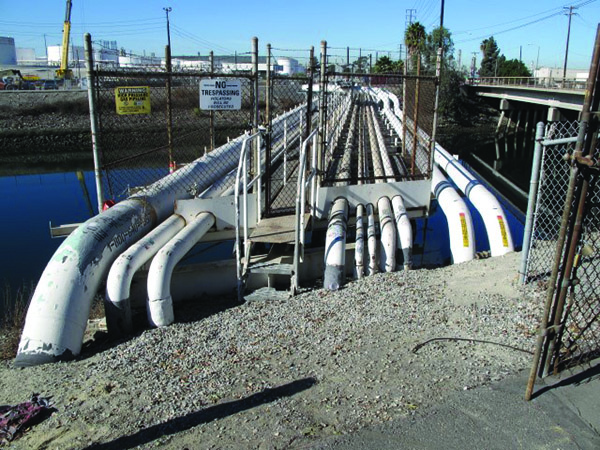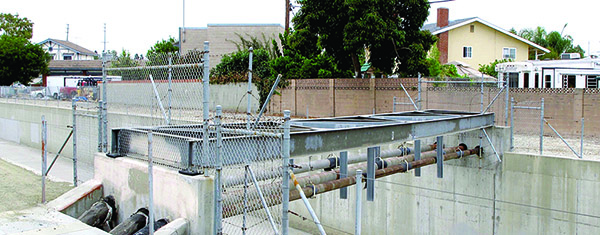July 2018, Vol. 245, No. 7
Features
New Day for Pipeline Tolls
By David Howell, Pipeline Equities, Houston
It used to be simple. A company decided to build a pipeline. They hired a right- of-way agent, secured easements at predictable rates, and the project began.
In those days, routes were determined, engineering was done, and the land acquired. The pipeline company controlled all of these facets, except for land acquisition. Landowners would be paid the going rate for right-of-way in the area based on standard or historic methods and amounts.
If an appraisal was required, then a reliable and economic approach was the across-the-fence (ATF) method, which based the value on whatever the property next door was worth. If not the ATF method, then the going historic rate would be the determining factor. If things got sticky or time consuming in negotiating with the landowner in question, the agent could always play a condemnation card and threaten to evoke an eminent domain seizure.
Then the Information Age came along and disrupted things. Previously, the best way to find out what was happening with other landowners was to visit the local Dairy Queen. Suddenly, everyone’s information was instantly available on the Internet. In many cases of purchasing easements, the going rate from pipeline companies is no longer relevant to the landowner. The rate in the landowner’s mind is calculated in a different manner.
Our company, Pipeline Equities, has bought and paid damages on millions of feet of easement while installing and removing pipeline over the past 30 years. We are closely acquainted with the going rate/historical rate paid for rights-of-way. However, these old rates no longer apply, as more enlightened landowners are rejecting the old assumptions and are demanding and getting more lucrative contracts.
Few Challenges
Most landowners have small tracts of a few hundred feet and don’t have the resources or inclination to fight or challenge a condemnation suit. Generally, they accept what pipeline companies offer, which has been very generous in many cases. Those offers increased, in part, due to the failure of many condemnation suits and the length of time it takes to respond and receive a judgment. In the end, delaying a project for a condemnation suit can be costly.
Right-of-way costs still hover at about 5-10% of the overall cost of the pipeline project, and it doesn’t behoove a pipeline owner to delay things over a minor cost problem on some easements. The easement cost on the project as a whole seems negligible, but some agents persist in threats of condemnation, perhaps in an effort to prevent a domino effect from landowners.
Navajo Royalties
The first unusual easement valuation happened several years ago in a court case in which a pipeline company was sued by the Navajos of Arizona, who sought an annual royalty or fee based on a percentage of the value of the product being transported through the line. The case was settled out of court and, as is usually the case, the terms of their agreement were not disclosed.
At first, this seemed to be a potential situation due to the sovereignty of the Navajo Nation, but the number of cases like this one have increased where sovereignty was not a factor.
Fee-Based on Value
Last fall, the asset manager for the city of Los Angeles called to ask about appraising the pipelines that were permitted by fee and contract to run under the streets of the city.
There were 23 lines of various lengths carrying crude oil, jet fuel, gasoline and other products to a suburban refinery district The city was charging annual fees up to 2% of the value of the product in the pipeline, which generated $16 million to $25 million per year, but he wanted to stabilize this income (at the higher amount) and asked if an appraisal of the lines was needed.
We were in the process of determining the scope of work when he called back to report the California Supreme Court had set a precedent with its ruling in another case, which would allow the city could charge up to 10% of the value of the product.
Length of Pipe
Houston has always been a pro-business town. It was a land developer’s city and continues as an entrepreneurial hot spot. The Houston Ship Channel connects inland Houston to the Gulf of Mexico 60 miles away. There are many refineries, as well as plants and factories, along the way that use oil and oil-derived products to build and maintain thousands of products. Pipelines crisscross the channel all along the route.
The fees charged by the Port Authority and the Houston Ship Channel to cross their jurisdictions are based on the diameter and length of the pipe. For example, an 8- to 16-inch line would have a fee of $4.46 per linear foot, with an $1,831 minimum assessment per line. A 32- to 48-inch line would be assessed at $14.23 per foot, with a $5,802 minimum per line, and so forth.
Based on Volume
Last year, while preparing for a sizable water pipeline project in West Texas, a company leased an easement across University Lands. The University Land Trust (UT Lands) owns about 3 million acres in West Texas. Its job is to generate as much cash flow as possible, and its procedure is well known in the right-of-way business.
UT Lands’ standard price for 10-year easement is based on pipe diameter and a damage fee when taken it up in 10 years, unless the easement lease is renewed for an additional 10 years. A surprise occurred last year when the Trust decided to assess a new pipeline based on volume of throughput at $.10 per barrel, in addition to the easement cost.
With a capacity of 250,000 bpd, that rate would flow $25,000 per day into university coffers to help to educate students. So, the company was left with either incorporating the cost into their cost of operations or raising its tariffs.
Arbitrary Basis
In effect, almost all assessments are arbitrary in nature. It’s doubtful there was any formula 150 years ago when someone paid $.15 per rod for the first pipeline easement.
The city of Houston owns some property on the east side of the city and assessed a fee of $28,000 per year for one line to cross the property. There was no mention of the outside diameter or overall length of the pipeline.
A land developer in Los Angeles County, Calif., ceded the surface rights to the flood control district for a drainage channel, but continues to own the land below the channel and the air rights above it.
Over the past 50 years, the land company has given permits for various pipelines to cross the property and currently receives an average of $5,600 per year, per line to cross their channel. The company is not sure it wants the pipelines crossing the channel at any rate and is assessing its position in that regard.
But, the pipeline has no other place to go, as the same company owns most surrounding properties. Is this a case for condemnation? The considerations of 21 crude and product pipeline crossing over a channel that empties into the Pacific Ocean 2 miles away are huge. What formula would determine the risk to pipeline owners in cases of vandalism, deterioration or accidental rupture? What amount is sufficient to mitigate risks and award adequate and just compensation?
A pipeline company in the Marcellus Shale determined it could save significant time and expense by purchasing the rights to lay a pipeline on the property owned by a toll road authority over a 200-mile route. The cost of the transaction: a $178 million fee paid to the toll road owners vs. $267 million to go an alternate route, after environmental considerations.
While the cases cited in this article were initially surprising, it’s clear that a trend of landowners determining the easement value has begun. This trend is limited, however, to those with the resources and knowledge to challenge rather than accept the going rates offered by pipeline companies.
Still, with so much information readily available to those willing to do the research, for many that day is already here. P&GJ
Author:

David Howell leads Pipeline Equities in pipeline removals and acquisitions in Oklahoma, Louisiana, Texas New Mexico and California.







Comments